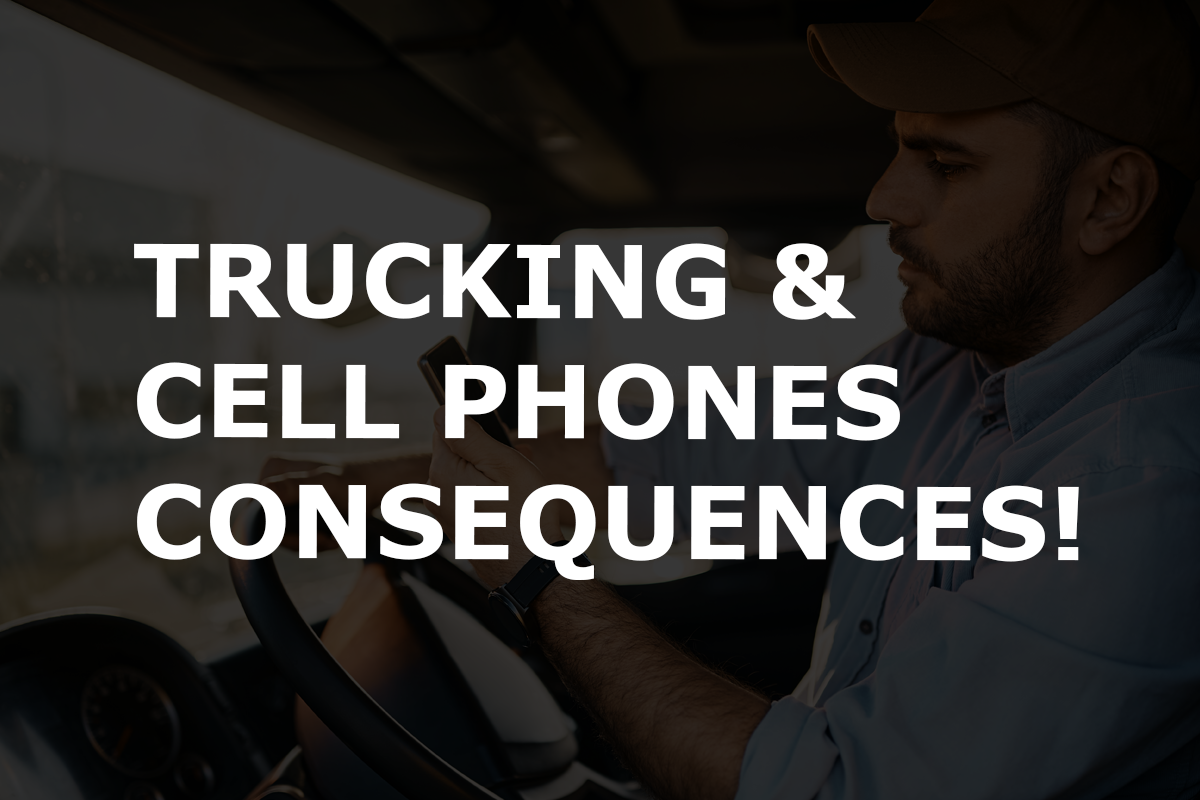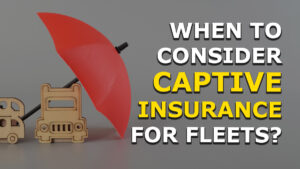Professional drivers need to understand the serious consequences that come from handheld device violations, like texting, using your ELD, or managing apps while driving.
It all started in 2012 when FMCSA made a rule that restricts the use of all hand-held mobile devices by drivers of commercial motor vehicles (CMVs).
Over time, the consequences of these violations have only become worse.
Let’s take a look at what you can and can’t do with mobile devices, what are the consequences, and how to stay in compliance with federal and state rules.
What is the FMCSA rule on handheld devices like cell phones?
The rule is found in 49 CFR 392.82(a) “Using a hand-held mobile telephone”, which states that:
- No driver shall use a hand-held mobile telephone while driving a CMV, and
- No motor carrier shall allow or require its drivers to use a hand-held mobile telephone while driving a CMV
According to the definitions in rule 49 CFR 390.5(T), the use of a hand-held mobile telephone means:
- Using at least one hand to hold a mobile phone to make a call
- Dialing a mobile phone by pressing more than a single button, or
- Reaching for a mobile phone in a manner that requires a driver to maneuver so that he or she is no longer in a seated driving position, restrained by a seat belt
Based on that definition, using a mobile device for other functions, like streaming music or a podcast, would not technically be a violation of this statute.
Nevertheless, the word of the law does not stop law enforcement from issuing citations anytime they see a commercial driver holding a mobile phone or when they see a lit mobile phone screen in a moving commercial vehicle.
What if it was an emergency?
Well, the law contains an “emergency exception” under 49 CFR 392.82(c) that allows the use of a mobile telephone while driving in the event of an emergency “when necessary to communicate with law enforcement officials or other emergency services.”
What are the fines or penalties of a texting while driving violation?
According to FMCSA, “using a hand-held mobile phone while driving a CMV” can result in penalties up to $2,750 for drivers and up to $11,000 for employers who allow or require drivers to use a hand-held communications device while driving.
Multiple violations of the prohibition of using a hand-held mobile phone while driving a CMV can result in a driver disqualification by FMCSA.
- Second violation: A driver is disqualified for 60 days if the driver is convicted of two violations of § 392.82(a) of this chapter in separate incidents committed during any 3-year period.
- Third or subsequent violation: A driver is disqualified for 120 days if the driver is convicted of three or more violations of § 392.82(a) of this chapter in separate incidents committed during any 3-year period.
- Caught again in the next 3 years: This will cost you 60 days of being disqualified from operating a CMV. After that the penalty goes up to 120 days.
Multiple violations of State laws prohibiting use of a mobile phone while driving a CMV is a serious traffic violation that could result in fines, probation, disqualification by a State of drivers required to have a CDL, and potential jail time.
- In Oregon, it can be a criminal penalty for using a handheld device while driving by receiving a max penalty of 6 months in jail! Of course, in practice, jail time and probation are unlikely.
- In California, a driver can be cited for just holding the phone in their hand.
Additional Consequences
Each time you get a violation, depending on the category and severity of the violation, points are added to your CSA scores.
“Using a hand-held mobile phone while driving a CMV” is considered a serious violation under the FMCSA’s Safety Measurement System (SMS).
Your “Unsafe driving” CSA scores are based on many things including the highest severity weight violation “Driving a CMV while texting” which has a severity weight of 10, similar to speeding over 15mph above the speed limit.
Your CSA scores are used to identify you as a safe driver or a high-risk driver, which can help or hurt you and your carrier in several ways.
- Insurance rates – The higher your CSA scores, the higher your insurance premiums, and the lower your CSA scores, the lower your insurance premiums.
- DOT audits and roadside inspections – The lower your CSA scores, the fewer compliance checks you will have, including DOT audits and roadside inspections.
- Clients – CSA scores are public and can be seen by current or potential clients. If you want to maintain or grow your client base, keep low CSA scores.
- Drivers – Having good CSA scores can help you retain current drivers and recruit new drivers. Good drivers want to work for a company that is safe.
Actively managing the Safety Measurement System (SMS) scores is crucial to motor carriers, underwriters, and how risk is measured in the trucking industry.
Just because you did not receive a ticket does not necessarily mean you are in the clear. In other words, a driver vehicle examination report, which is what an officer uses to report CSA violations, can be issued without a citation.
How to stay in compliance with handheld device rule
To comply, a driver must have his or her mobile telephone located where he or she is able to initiate, answer, or terminate a call by touching a single button. A mounted phone is acceptable if it is mounted close to the driver.
The driver must be in a seated driving position and properly restrained by a seat belt. Drivers are not in compliance if they unsafely reach for a mobile phone, even if they intend to use the hands-free function.
Tips for handheld device compliance:
- Make sure the mobile telephone is within close enough proximity that it is operable while the driver is restrained by properly installed and adjusted seat belts.
- For example, some drivers just place phone in cup holder or mount it on a magnetic inductive charging mount.
- Use an earpiece or the speaker phone function.
- Use voice-activated dialing.
- Use the hands-free feature.
- For example, use a Blue Parrot headset that is connected to your phone and have the phone connected through the truck audio via Bluetooth. Then you can send and receive text messages hands-free.
- Additionally, you can have Google assistant set up for opening apps, such as maps, trucker path, NOAA streaming services, Spotify to stream out trucking podcast “Caution: Wide Right”, etc.
- Check your company policy: For example, Schneider has a no phone call while driving policy, even with a Bluetooth headset.
Just remember, use caution even with hands free voice activation as any phone conversation can be distracting while driving. Keep it to a minimum while driving and if an important conversation, find a safe place to pull over and focus on the conversation without driving.
If you receive a cell phone ticket despite precautions, you could hire a traffic attorney to resolve the ticket in court to avoid the first conviction. If there is no first conviction, there can’t be a second.
How will Proactive Safety Management lower my CSA score?
We believe the best chance of better insurance rates is being focused on maintaining a clean driving record and proactive safety management.
Carriers being proactive will put them in a better position to mitigate risk, improve efficiencies, reduce costs, and spend more time with their drivers in an effort to manage a safe and compliant fleet.
With proactive safety, carriers will be more organized and will have a measured plan to lower motor carrier Safety Measurement System (SMS) scores.
While data and paper management can be crucial, using a third-party partner will help you be prepared for audit representation, provide document storage, and offer up-to-date company policies and handbook of FMCSA rules and regulation changes.
Not only will proactive safety help your fleet with DOT compliance, but it is proven to lower insurance premiums as you will have documented ways to show a reduction in risk.
Our safety management programs are perfect for combining multiple services and can be tailored to fit your needs, whether you are a new owner operator or a seasoned trucker or business owner.
When partnering with a third-party program, your fleet has a team of experts that costs much less than hiring a safety director or team and can receive constant monitoring to keep your operation FMCSA compliant. Driver management will be simplified and the driver hiring process will shorten.
At CNS, our DOT Compliance Programs focus on Proactive Safety Management (PSM), a mindset that will ensure your fleet’s safety and compliance is always in order and ahead of the FMCSA.
Our PSM Motor Carrier Program includes:
- ELD management
- Driver Qualification File Management
- New driver on-boarding
- Driver safety meetings
- CSA score management
- Policies and handbooks
- Vehicle maintenance
- and more






